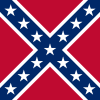

| Online: | |
| Visits: | |
| Stories: |

| Story Views | |
| Now: | |
| Last Hour: | |
| Last 24 Hours: | |
| Total: | |
The Creation of Tidewater’s Aristocracy
I’m still feeling inspired by Louis Hartz’s The Liberal Tradition In America.
Do we find Lockean liberalism in pre-Revolutionary Tidewater Virginia or something else? Do we find Hartz’s frustrated aristocracy or rather a triumphant elite that had amassed great landed wealth and intermarried and was steadily molding Virginia into a country gentleman’s paradise?
“Even if one includes not only the largest estates – those with several thousand acres of land and at least forty to fifty slaves – but also the merely substantial estates – those with at least a thousand acres and five to ten slaves – this emergent elite constituted only a small fraction of the landowning population – from 2 to 5 percent in most counties. Nevertheless, members of this group controlled close to 50 percent of the total wealth and exerted a disproportionate influence on Chesapeake life. During the first four decades of the eighteenth century, they transformed the spatial and social landscape by establishing the large slave-powered plantations, those diversified and, in a few cases, perhaps even almost self-sufficient communities that quickly became “the principal symbol of Chesapeake society.”
During the half-century beginning around 1720, the great families who presided over these plantations – the second and third generations of the creole elite that had begun to emerge between 1680 and 1720 – consolidated their economic, social and political position by intermarrying across local political boundaries. In the process, they establishing a far-ranging and complex network of provincewide, to some extent even regionwide, interrelated, highly visible, and prestigious elite families. As they amassed more and more wealth, they pursued a lifestyle appropriate to an English rural gentry. They built grand new brick houses commanding the countryside and broad rivers and inlets of the Chesapeake; they employed more of their slaves in domestic service; they filled their houses with luxury possessions, including imported carpets, silver plate, books, and other items that would help to confirm their own self-conceptions and to identify them to other people of status and wealth. They provided their sons, sometimes in Britain, with the formal classical educations appropriate for gentlemen of English descent.
Though they by no means neglected their private interests, they gradually learned to sublimate the drive toward personal aggrandizement and the impulse toward anarchic individualism that had been so powerfully evident among their seventeenth-century ancestors. They proudly maintained that militant devotion to personal independence and the sanctity of individual property that was thought to be the hallmark of true Britons, but they also consciously cultivated traditional British upper-class political and social values, including politeness, liberality, sociability, and stewardship. Setting themselves up as exemplars of public spiritedness and authority and eagerly grasping the social and political obligations appropriate to their status, they assumed an almost total hegemony over civil and religious institutions at both the local and provincial levels and thereby endowed those institutions with enormously more energy and authority than they had ever enjoyed during the region’s first century of existence.
To symbolize that authority, they built new, classically proportioned brick buildings in the provincial capitals in Williamsburg and Annapolis and courthouses and churches at central places in their localities. Further to “traditionalize” their societies, they sought to bring Chesapeake legal, inheritance, and religious practices into closer conformity with those in Britain and thereby eliminated many of the “creolisms” that had formerly made those practices both more simple and more flexible than those of metropolitan culture. As sources of capital, services, and counsel for their less affluent neighbors, they became the centers of local networks of dependence in much the same way, if probably not to anywhere near the same degree, as had the landed elite in Britain. With their great wealth, their affluent and more refined lifestyles, their provincewide connections and cosmopolitan outlook, their growing family charisma, and their social and political authority, members of the Chesapeake elite came through the middle decades of the eighteenth century to be ever more sharply distinguished from people of less wealth.
As the elite became increasingly more tightly interconnected and as political and religious institutions acquired more vigor, the Chesapeake also became less conflicted, better integrated, and more cohesive. Intraelite competition, which in the seventeenth century had contributed to a high degree of public divisiveness, had by the 1730s been largely confined to much less disruptive and highly structured cultural channels, including horseracing, gambling, social display, and political debate. With no serious vertical or horizontal social fissures within the free white population, the lower and middling ranks became ever more depoliticized and deferential toward this relatively cohesive, responsive, even paternal elite, and an astonishing degree of public harmony prevailed, especially in Virginia, where leaders took great pride in their society’s political tranquility, in the liberality and community-mindedness – the patriotism – of its wealthiest and most prominent inhabitants, and in the almost total absence of factionalism and party strife …”
This is very interesting.
We don’t find a social order built on universal natural rights or the abstract ideals of “liberty” and “equality.” Instead, we find an organic society in Virginia that was becoming much more cohesive. It rested on a foundation of plantation slavery. It had a classically educated elite prized that the virtue of “liberality.” It had a peculiarly British devotion to the sanctity of individual property.
It is easy to see what happened here. Under the spell of the Enlightenment, late 18th century Virginians like Thomas Jefferson would later universalize elements of their own culture which was invoked as a rationalization in the Declaration of Independence to justify the American Revolution.
Note: In the previous installment, we saw how the Englishmen in Virginia became White Virginians.
Source: http://www.occidentaldissent.com/2017/03/26/the-creation-of-tidewaters-aristocracy/


